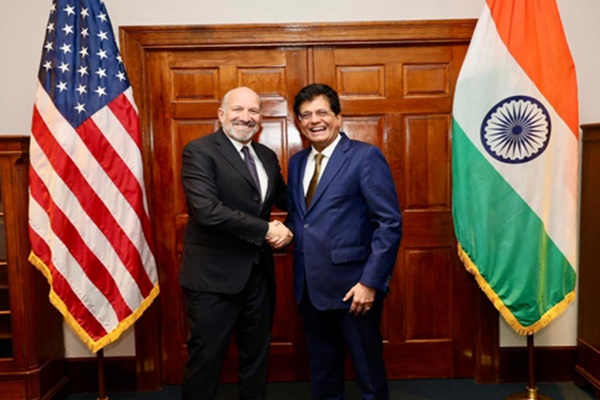Amid an ongoing tariff dispute, the Indian government has announced that both India and the United States are committed to working toward an early conclusion of a mutually beneficial trade deal. The statement comes at a critical juncture, with bilateral trade ties under strain due to tit-for-tat tariffs and disagreements over market access, but also with recognition that both economies stand to gain from deeper cooperation.
Backdrop of the Tariff Row
The tariff row stems from disputes over agricultural products, medical devices, and digital services, as well as U.S. concerns about market access and India’s stance on data localization. Washington has also raised issues around intellectual property protection, while India has pushed back against what it sees as unfair protectionist measures, including higher tariffs on steel, aluminum, and certain goods.
In recent months, the U.S. has expanded its tariff net on select products, while India has sought to protect its domestic industries by imposing counter-tariffs on American exports. Despite this friction, trade between the two nations remains robust, crossing $190 billion in 2023, with both sides recognizing the potential to scale much higher.
India’s Position
The Indian government has emphasized that any trade pact must be fair, balanced, and growth-oriented, ensuring opportunities for Indian exporters while respecting domestic sensitivities. The Ministry of Commerce highlighted that the deal would not only aim to reduce tariff barriers but also address non-tariff challenges, such as regulatory clearances and mutual recognition of standards.
The U.S. View
For Washington, resolving the trade row is part of a broader strategy to deepen ties with India as a counterbalance to China’s dominance in Asia. The U.S. has consistently sought greater access to India’s fast-growing consumer market, particularly in sectors such as agriculture, e-commerce, pharmaceuticals, and digital services.
Why an Early Deal Matters
-
Boosting Investor Confidence: A successful deal would signal stability and predictability, attracting investments in manufacturing, technology, and services.
-
Supply Chain Diversification: With both countries looking to reduce dependency on China, a smooth trade pact could accelerate supply chain realignment.
-
Support for SMEs: Lower tariffs and simplified trade rules would benefit small and medium enterprises in both nations.
-
Strategic Ties: Beyond economics, the deal would strengthen the strategic partnership, complementing defense and technology cooperation.
Challenges Ahead
Despite goodwill on both sides, challenges remain:
-
U.S. pressure for wider market access in agriculture may clash with India’s need to safeguard its farmers.
-
India’s insistence on digital sovereignty and data localization rules may conflict with U.S. tech giants.
-
Tariff harmonization across multiple sectors will require painstaking negotiations.
Conclusion
Even as the tariff row persists, the renewed push for a mutually beneficial trade deal reflects the pragmatic recognition that India and the U.S. cannot afford prolonged economic friction. Both governments understand that a stable, rules-based framework for trade will not only boost bilateral commerce but also reinforce their broader strategic partnership. If successful, the deal could mark a turning point, transforming India-U.S. economic relations into a model of cooperation amid global trade uncertainties.



